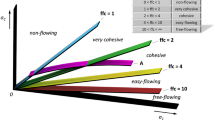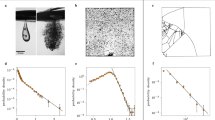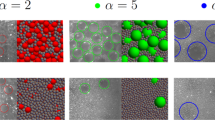Abstract
WHEN a powder is compacted by a simple application of pressure, the density and strength of the compact so formed (measured after the pressure has been released) are determined by the pressure used, but ultimately they approach limiting values which are not exceeded by further increasing the pressure. The limiting density of the compact falls short of the density of the material of the powder by an appreciable margin, say 4–20 per cent, depending on the material used (Fig. 1).
This is a preview of subscription content, access via your institution
Access options
Subscribe to this journal
Receive 51 print issues and online access
$199.00 per year
only $3.90 per issue
Buy this article
- Purchase on Springer Link
- Instant access to full article PDF
Prices may be subject to local taxes which are calculated during checkout
Similar content being viewed by others
Author information
Authors and Affiliations
Rights and permissions
About this article
Cite this article
GREGORY, H., JONES, D. & PHILLIPS, J. Compaction of Briquettes. Nature 184, 120–121 (1959). https://doi.org/10.1038/184120b0
Issue Date:
DOI: https://doi.org/10.1038/184120b0
Comments
By submitting a comment you agree to abide by our Terms and Community Guidelines. If you find something abusive or that does not comply with our terms or guidelines please flag it as inappropriate.



